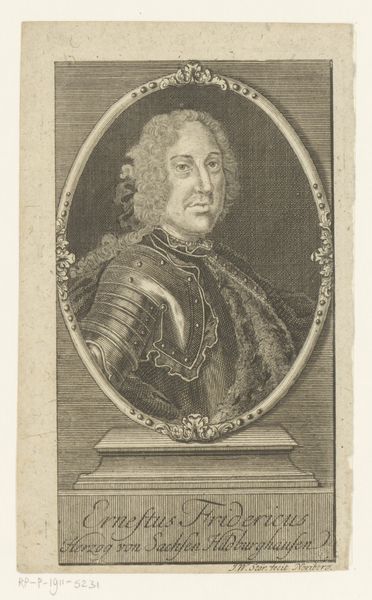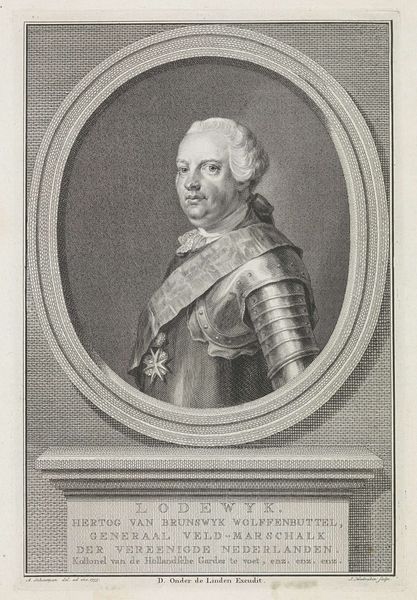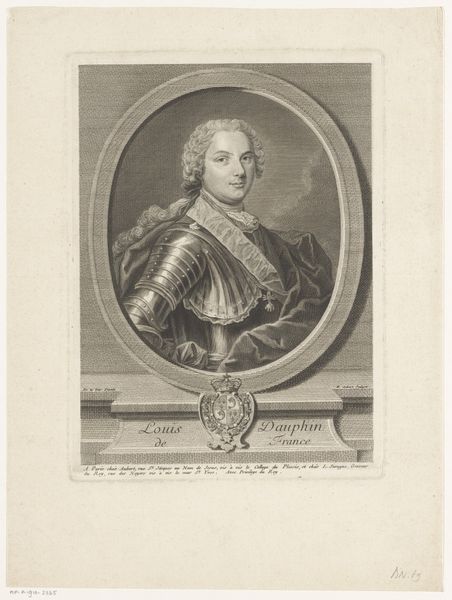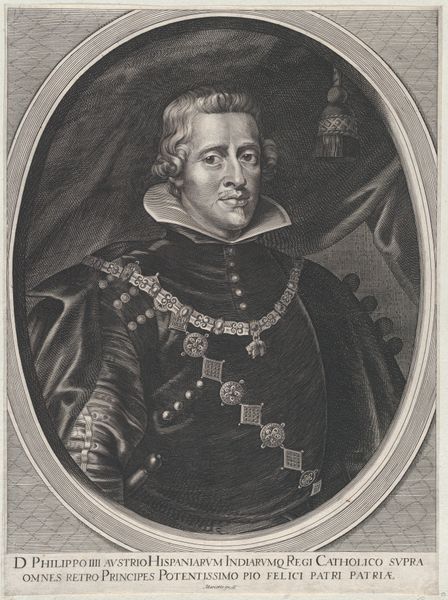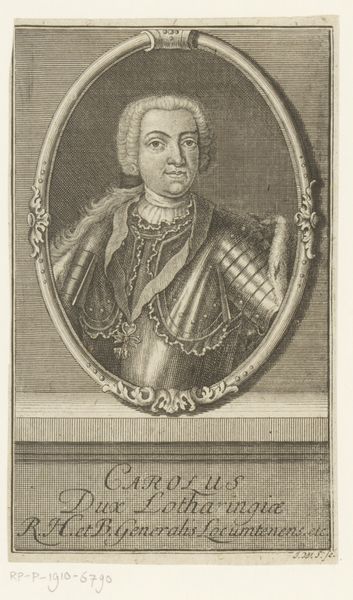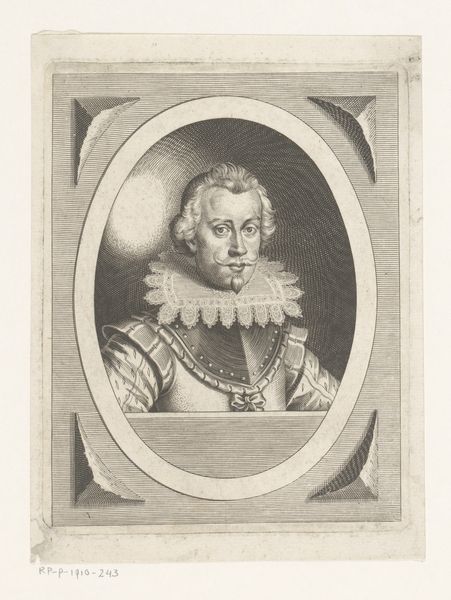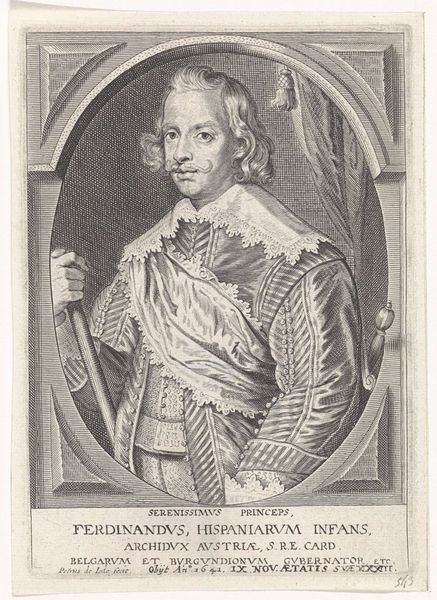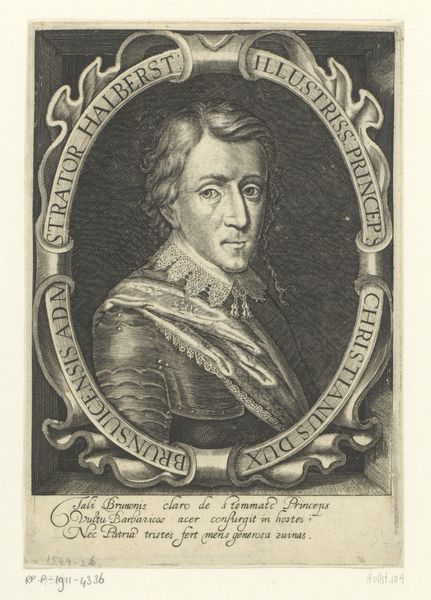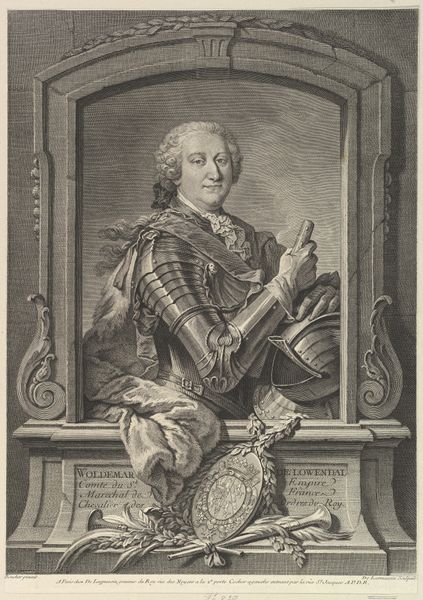
engraving
#
portrait
#
neoclacissism
#
history-painting
#
engraving
Dimensions: height 153 mm, width 94 mm
Copyright: Rijks Museum: Open Domain
Editor: So, we’re looking at a portrait of Ludwig Ernst von Braunschweig-Wolfenbüttel, an engraving made sometime between 1752 and 1798 by Hermann Jakob Tyroff. It’s striking how formal and staged it feels, but I'm curious about the choice of him wearing armor. What are your thoughts on this piece? Curator: The armor is more than mere attire; it’s a potent symbol. It resonates with a history of power, of leadership in times of conflict. It places Ludwig Ernst within a lineage of military prowess, recalling iconic figures who were painted in similar attire to evoke notions of courage and resilience. Do you notice the order he is wearing? Editor: Now that you mention it, yes! It resembles some sort of star or cross. How would that tie in with the image as a whole? Curator: Exactly. Decorations like those often signified allegiance to a specific order, cause, or nation. Consider what a shining emblem suggests. It alludes to virtue, valor, and divine favor. By adorning Ludwig Ernst with such a prestigious emblem, the artist aims to elevate him beyond a simple likeness. Editor: That makes sense. So the star acts almost as a visual shorthand for his noble qualities. Curator: Precisely. And don’t forget the frame. The classical oval speaks to the Neoclassical movement and all its associated imagery, reinforcing the subject's elevated status and connection to enduring ideals. Editor: So much packed into one image! It's fascinating how artists can embed such layers of meaning into their work. Curator: Indeed. This portrait serves as a microcosm of its time, encapsulating prevailing attitudes towards power, status, and the construction of historical narratives.
Comments
No comments
Be the first to comment and join the conversation on the ultimate creative platform.
